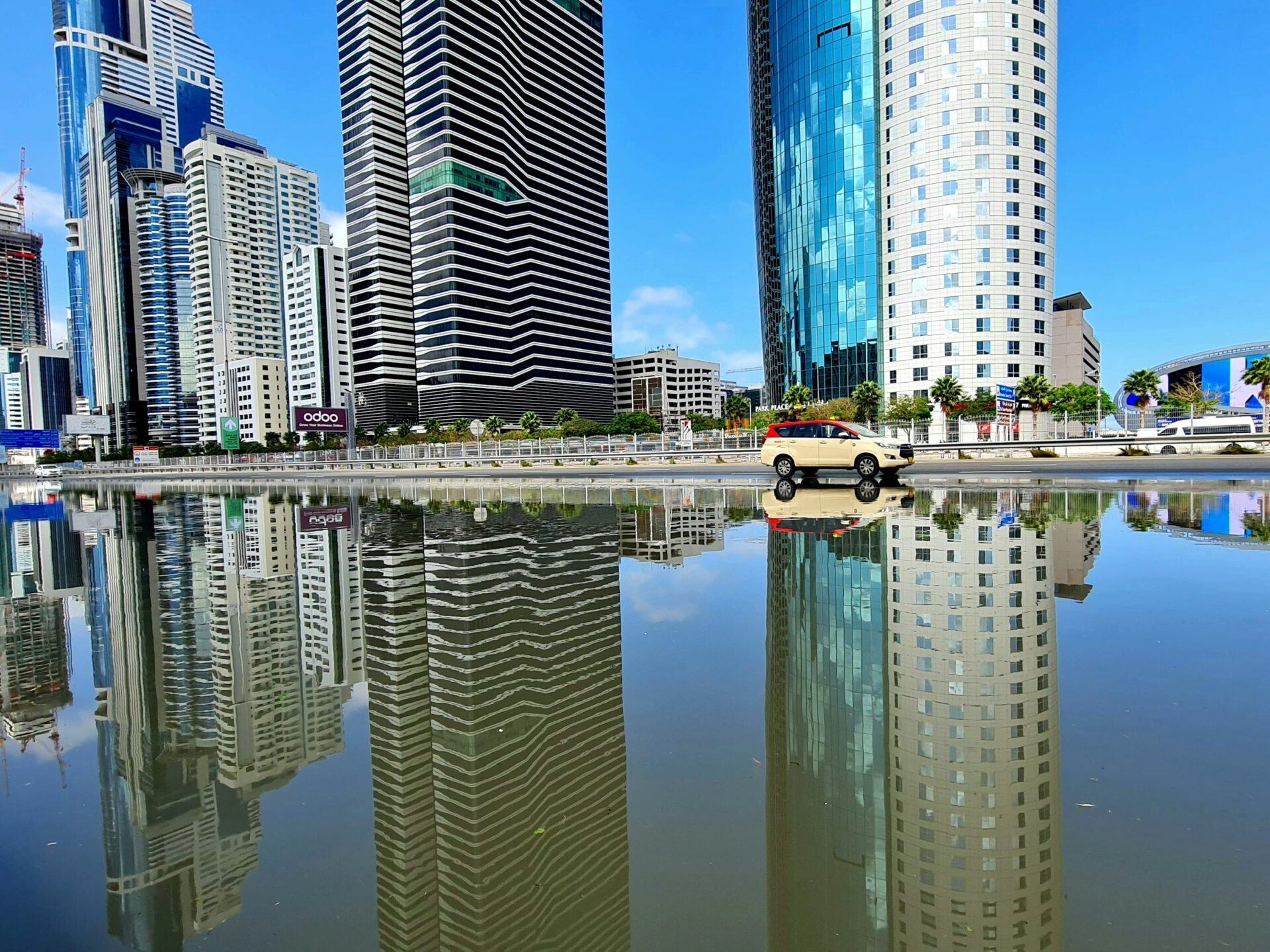4/22/2024
Early last week, the Arabian peninsula was hit by unprecedented rainfall, with parts of the desert nation United Arab Emirates receiving 10 inches of rain within 24 hours. Storms dumped the largest amount of rainfall the country has seen in more than 75 years, causing severe floods that swamped cities and created dangerous conditions across the region. The National Center of Meteorology in Abu Dhabi said the rain was “an exceptional event in the UAE’s climate history since the start of recording climate data, and it is expected that the coming hours will witness the recording of larger amounts of rainfall.”
As the flooding continued, residents were trapped in traffic, offices, and homes. Many reported leaks at their homes and malls were overrun with water pouring from roofs. Major highways through Dubai were reduced to single lanes in one direction, while the main road that connects Dubai with the capital Abu Dhabi closed in one direction. Airplanes skimmed through floodwaters on the tarmac at the Dubai International Airport while their support vehicles were nearly submerged.
While this extreme weather mimics the patterns climate scientists have long warned about, some wonder if cloud seeding – the process of releasing particles into the air to produce more precipitation – could instead be to blame for the catastrophic storms. Composed of tiny water droplets, clouds form when water vapor cools in the atmosphere. Precipitation, or water that falls to the surface as rain, occurs when these droplets condense and combine with particles of dust, salt, or smoke. That binding creates a raindrop that can fall from a cloud. Commonly used in areas that are facing drought concerns, cloud seeding is the process of adding these binding agents to the atmosphere to encourage more precipitation to fall.
The UAE government agency that oversees cloud seeding denied conducting any such operations before the storm. Additionally, Maarten Ambaum, professor of atmospheric physics and dynamics at the University of Reading, said that cloud seeding “is used for clouds that don’t normally produce rain, [which] would not normally develop a very severe storm.” Instead, scientists point to climate change as the cause of the severe storms. As the climate warms, the atmosphere will retain more moisture, resulting in heavier rainfall around the world. Friederike Otto, lecturer in climate science at Imperial College London, stated that “cloud seeding can’t create clouds from nothing. It encourages water that is already in the sky to condense faster and drop water in certain places.” The skepticism over the cause of the catastrophe only shows a public reluctance to believe that human activity is creating a global climate crisis that will ultimately result in these extreme events.
The rainfall was most likely caused by a natural weather system and exacerbated by climate change. Climate scientists say that rising temperatures are leading to more extreme weather events globally. “Rainfall from thunderstorms, like the ones seen in UAE in recent days, sees a particularly strong increase with warming. This is because convection, which is the strong updraft in thunderstorms, strengthens in a warmer world,” said Dim Coumou, a professor in climate extremes at Vrije Universiteit Amsterdam. And these severe weather events will only become more commonplace as the global temperature continues to rise.
The U.S. National Oceanic and Atmospheric Administration reports that the levels of heat-trapping gasses in the atmosphere have reached historic highs, growing at near-record fast paces. The atmospheric levels of carbon dioxide and methane have jumped 5.5% over the past decade. “Methane’s decadal spike should terrify us,” said Stanford University climate scientist Rob Jackson. “Fossil fuel pollution [warms] natural systems like wetlands and permafrost, [which release] more greenhouse gasses as they heat up.”
After the EPA issued a final rule to reduce industry-generated methane emissions from oil and gas, companies across the globe last year pledged massive cuts in methane emissions as part of an initiative to trim future rises in temperature. But in the past five years, methane levels have risen faster than ever before, and recent studies show that efforts to track methane vastly underestimate the pollution going into the air. Linking these severe weather events to the actions of harmful companies is the first step to slowing climate change and protecting human lives.

